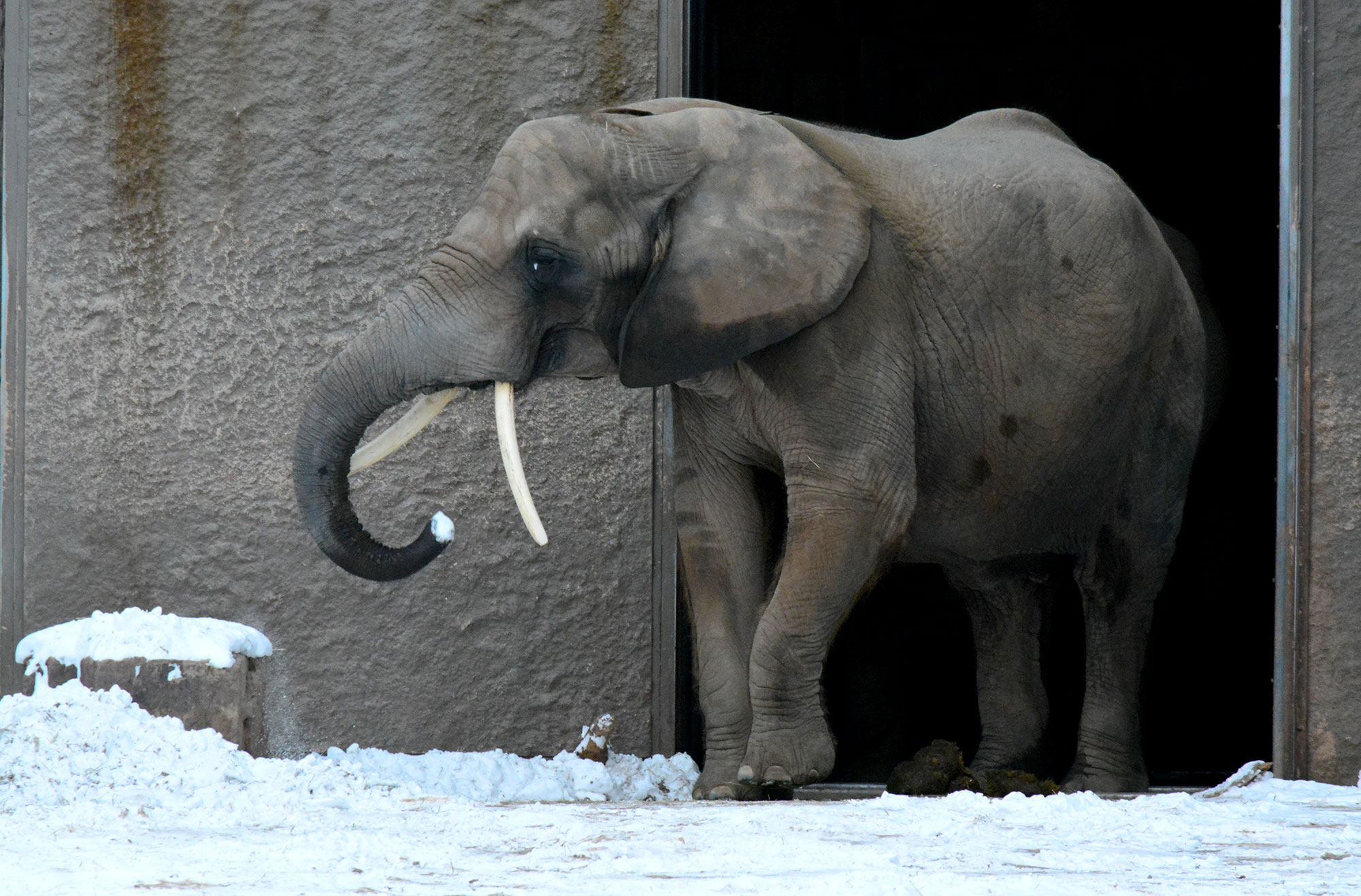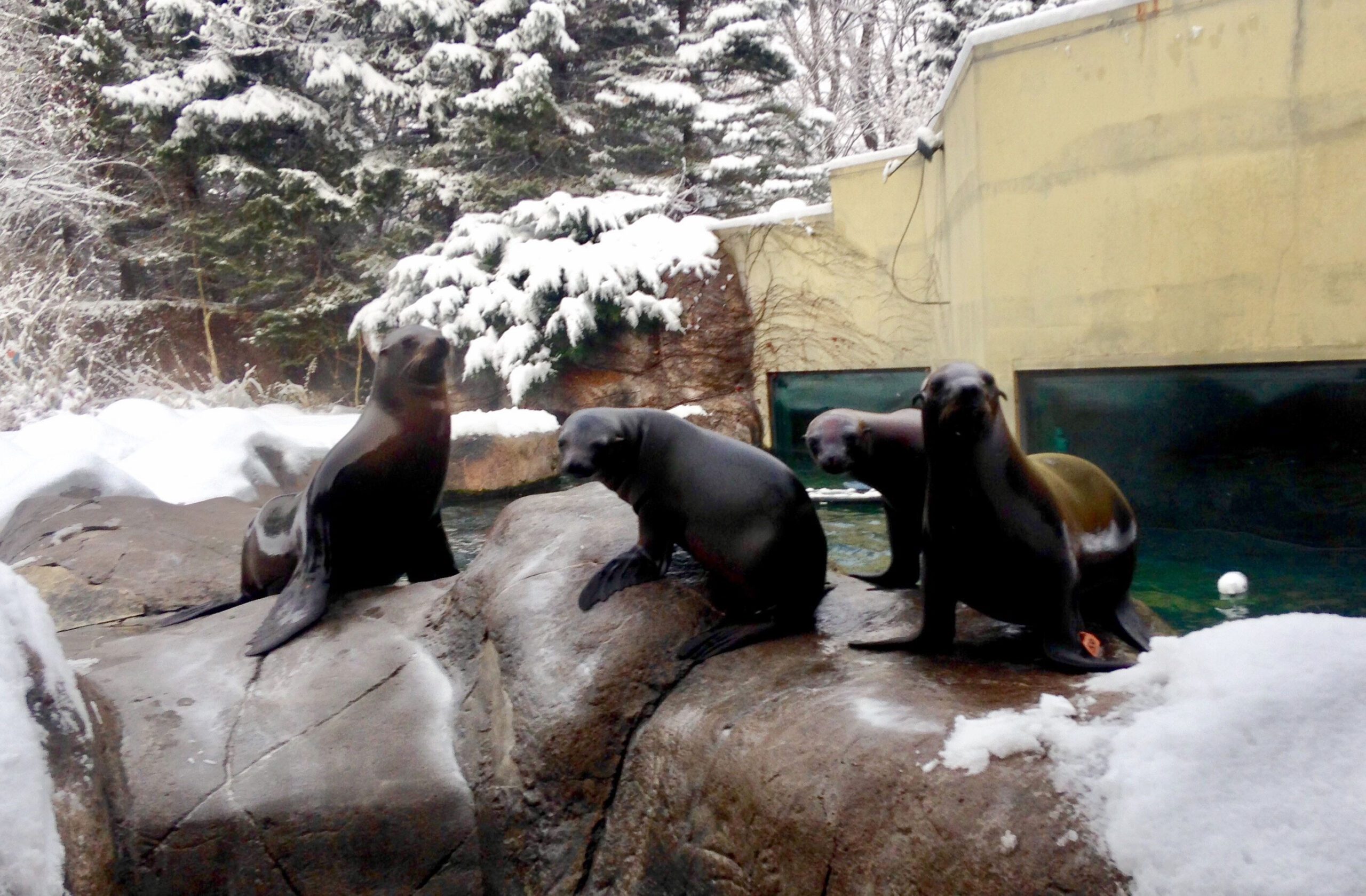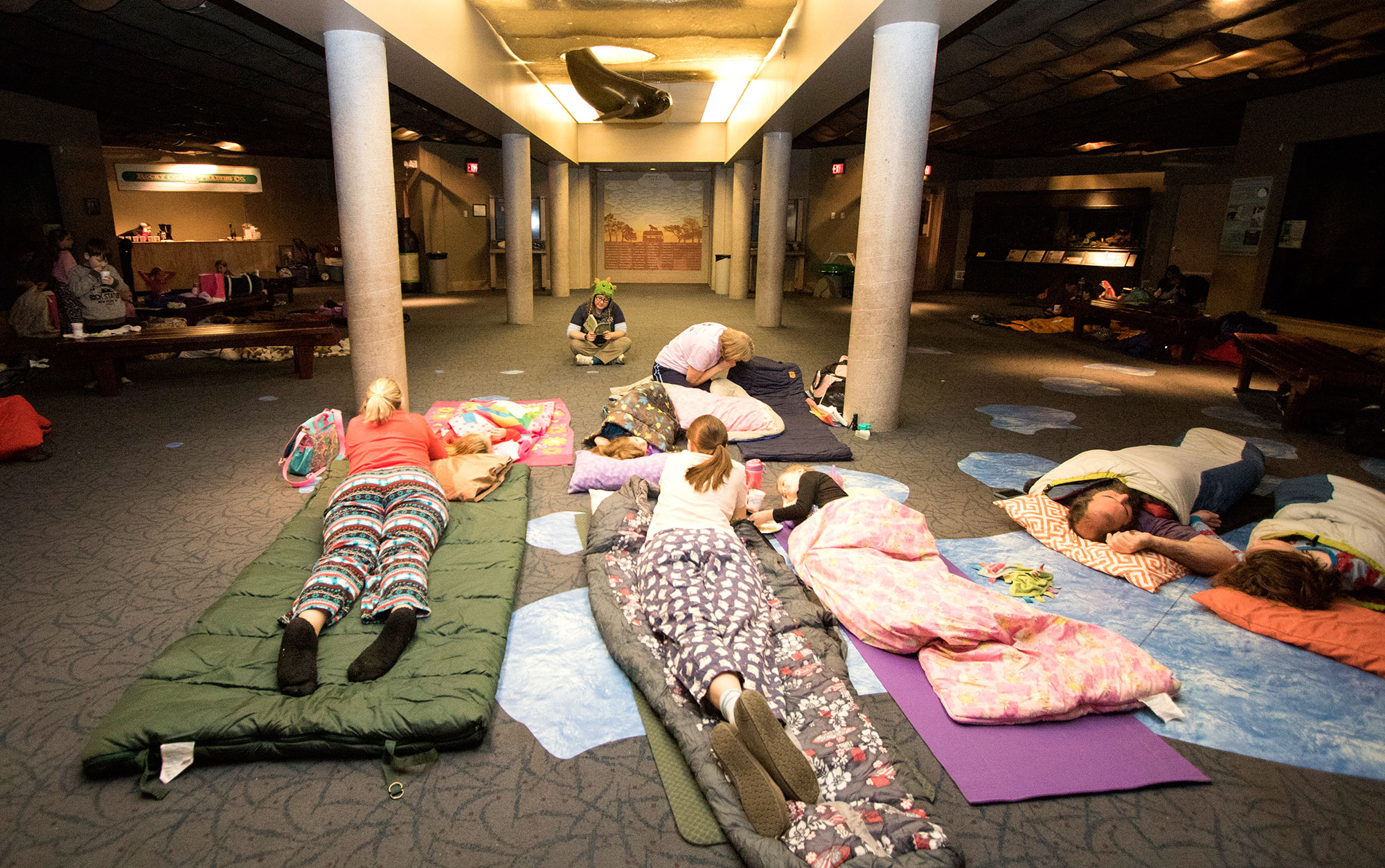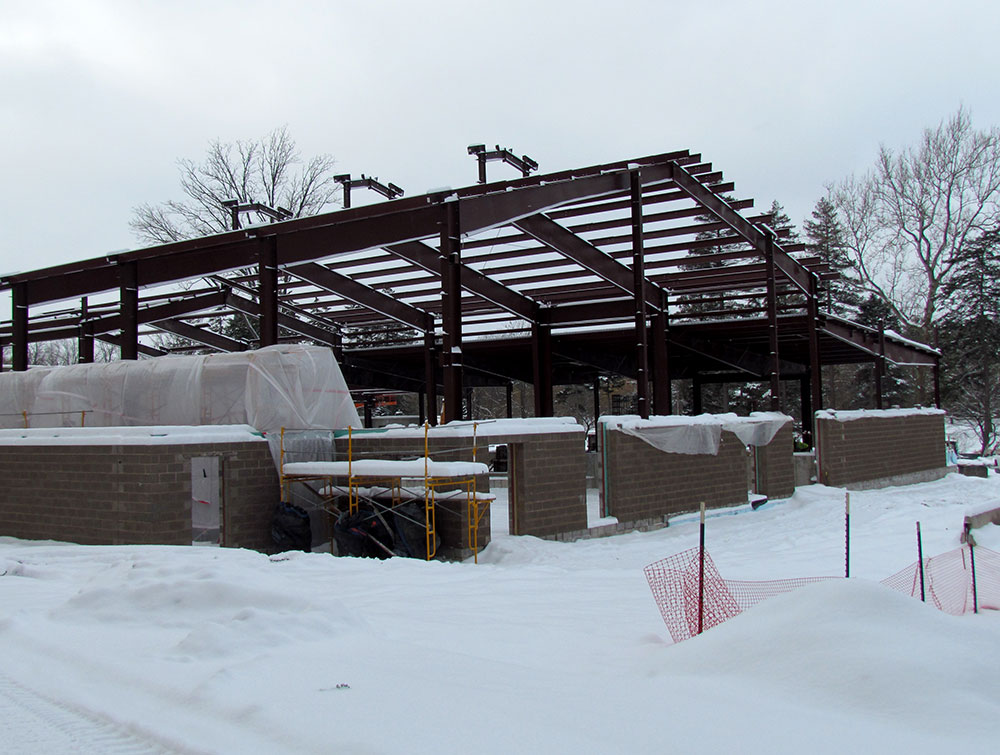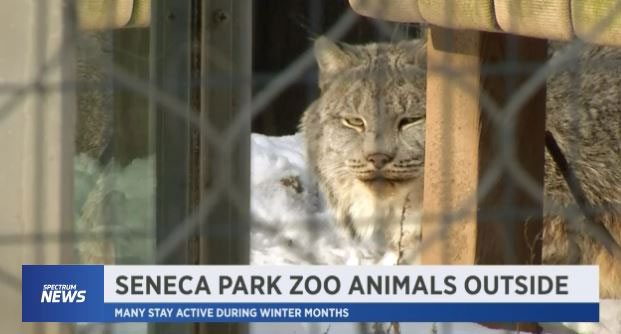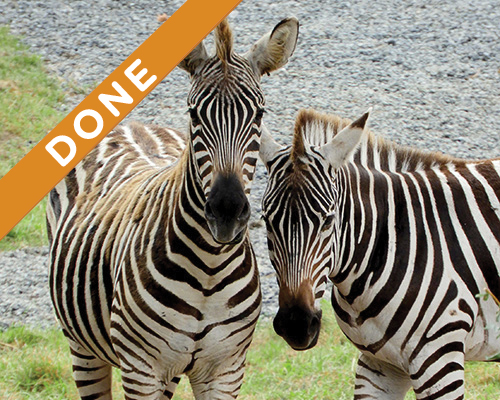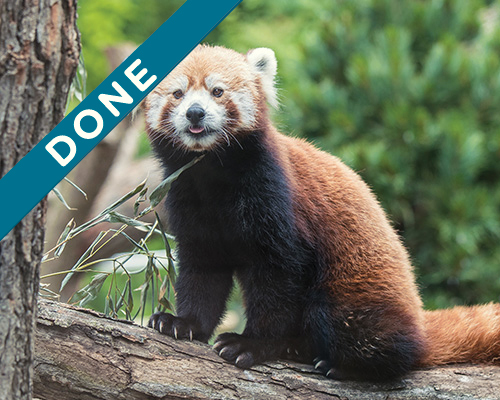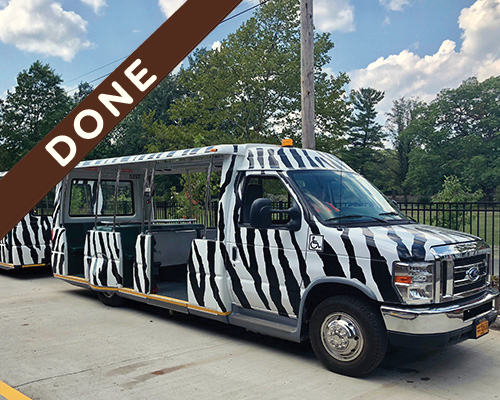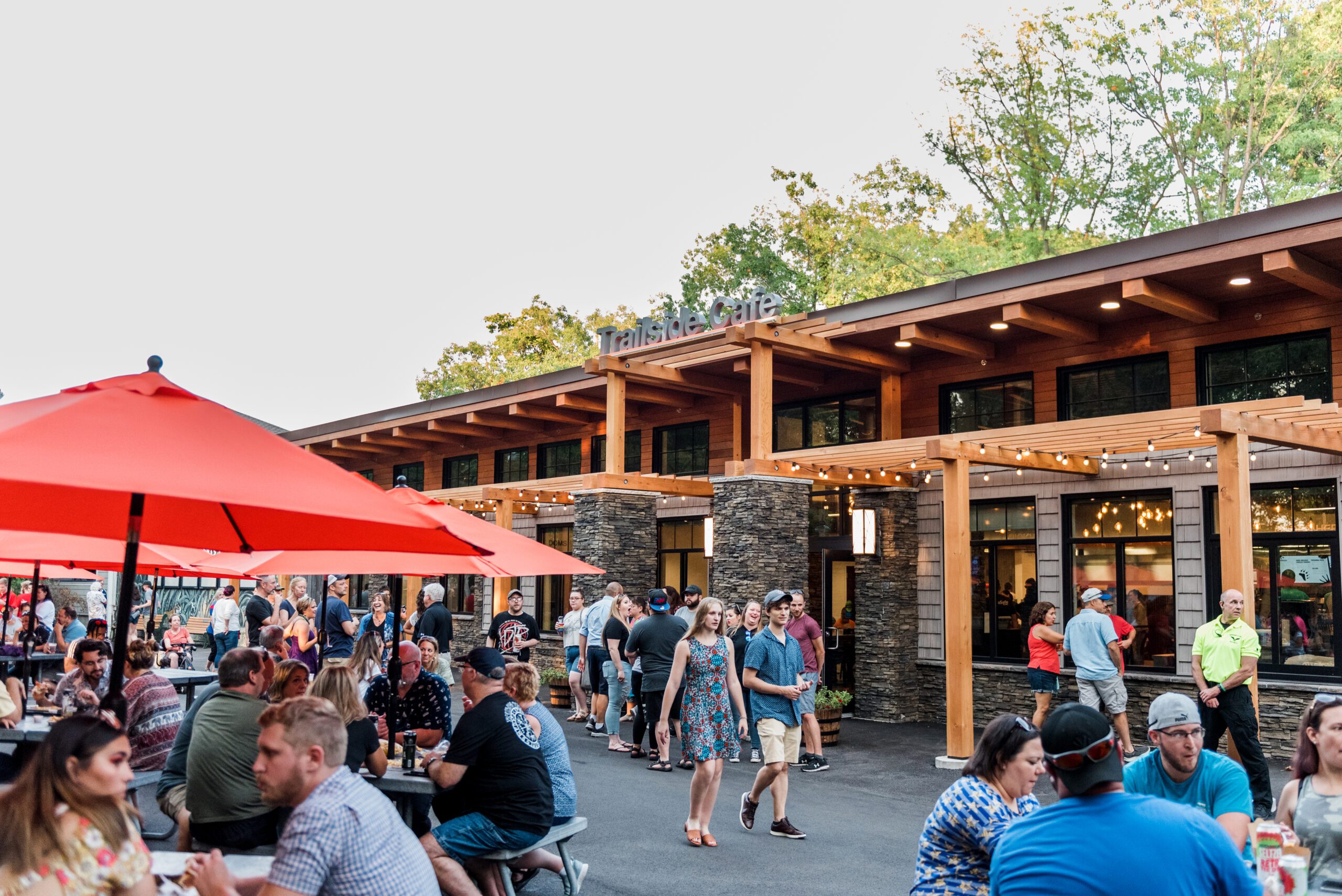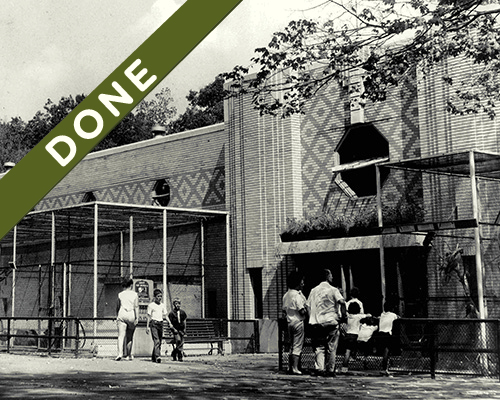January 28, 2018
Seneca Park Zoo is home to four African elephants, three African lions and 12 olive baboons. And I’m sure it comes as no surprise that Rochester, NY can experience some extreme winters, so what do the African animals do in the winter time?
Many people may be deterred from visiting the Zoo during the winter because they believe it’s too cold for many of the species. In fact, almost all the animals have access to their habitats and enjoy being out in the snow. It’s a new environment for them, so it is very enriching!The lions and baboons have heat rocks in their yards that give them a warm, dry place to lie if they choose to be outside. Adding pine shavings or straw beds make it even more inviting for them. The keeper staff shovels pathways through the snow to make it easier for the animals to move through their habitats, and make sure any objects or perching areas are clear of snow as well. Providing enrichment outside also encourages the animals to spend more time in their habitats. Scattering food, putting spices and perfume on bins or logs, and making snowmen for the animals are just a few of my personal favorites.Indoor areas are always accessible and are kept at approximately 65-70 degrees. The elephants and rhino are susceptible to hypothermia and frost bite, so they can’t be outside for extended periods of time if it’s below 40 degrees and they must be dry if they do go out.There are some days that the animals just prefer to stay indoors, which is usually on the bitter cold days. This is when it is most crucial to provide an assortment of enrichment for them. Providing new scents, objects, or changing their normal routine keeps the animals mentally and physically stimulated. The baboons are natural foragers, so giving them finely chopped produce and seed mix in their bedding material allows them to exhibit these natural behaviors. Both the baboons and lions enjoy receiving their food in cardboard boxes and bags, not only do they get something delicious to eat but they get to shred the cardboard in the process! Doing more training routines throughout the day helps keep the elephants engaged and is also great exercise for them.Keepers are always coming up with new ideas for enrichment, whether it’s building different structures or rearranging the logs and other furniture in their habitats. I recommend everyone visit the Zoo in the winter to see what it’s like. It’s a completely different experience and it’s quite fun watching all the animals explore their habitats in the snow!– Randi Conway, Zoo Keeper

